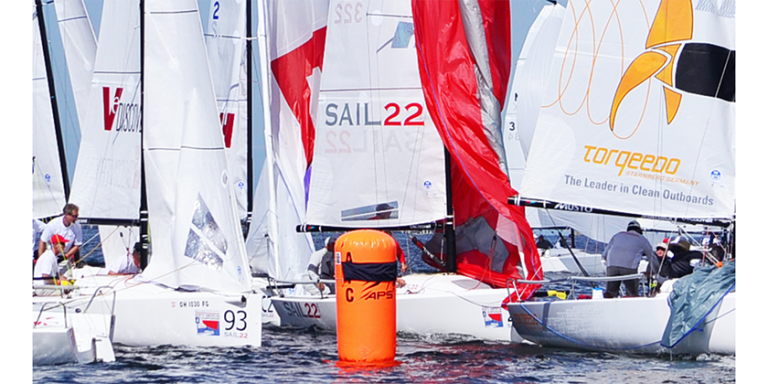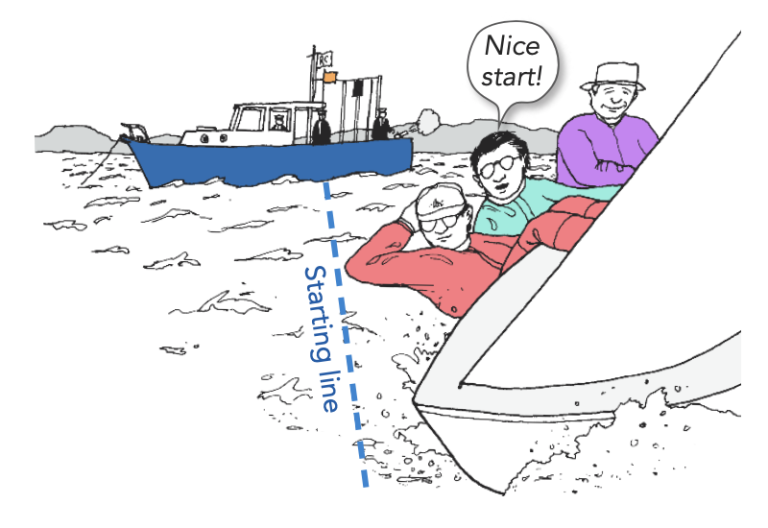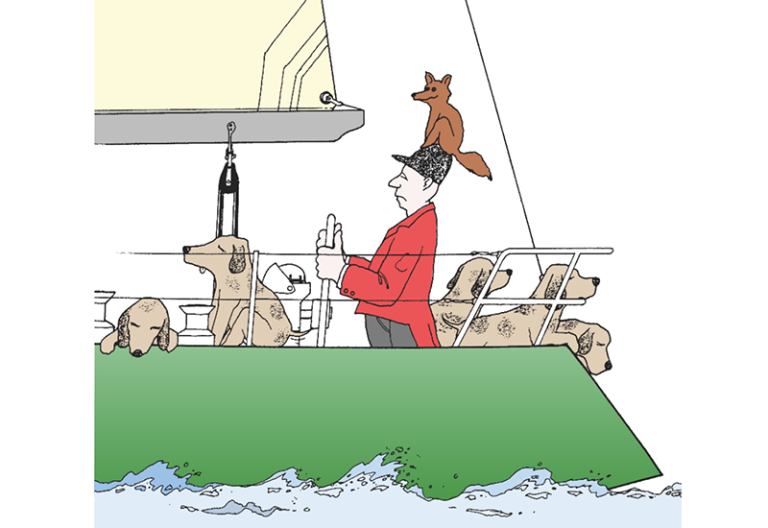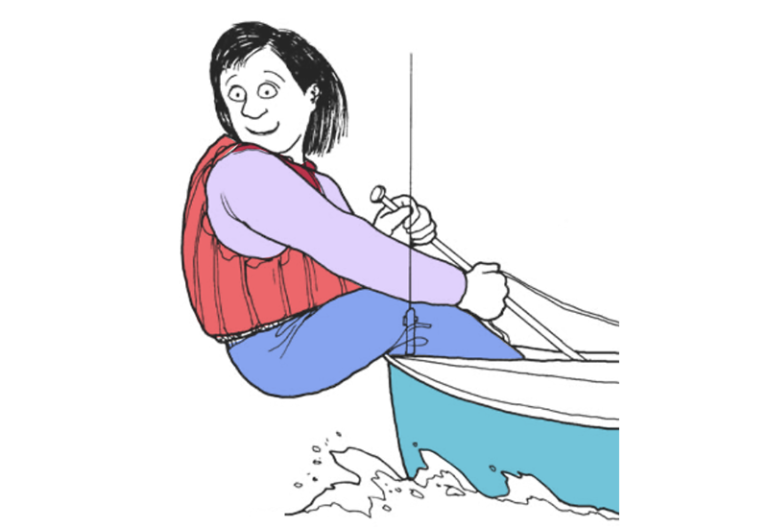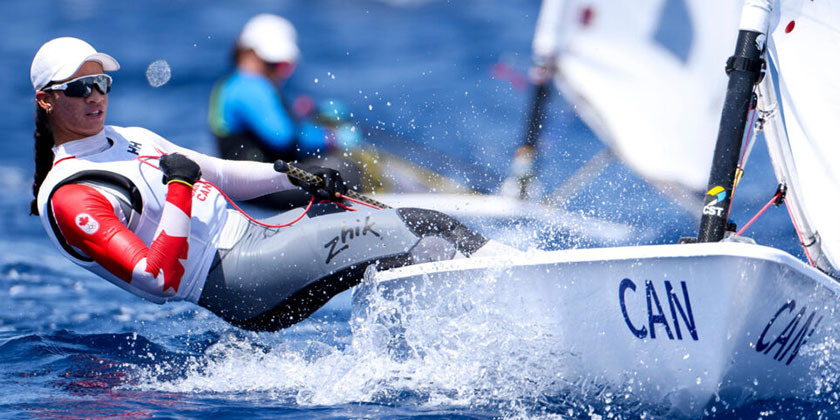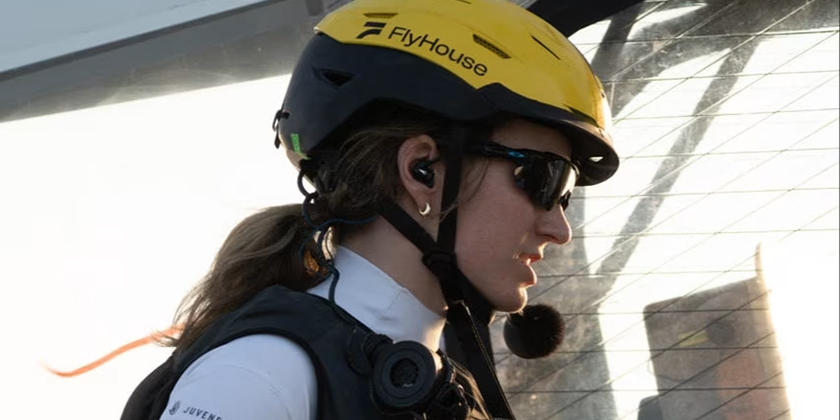Speed & Smarts: Searching for the Best Lead Position
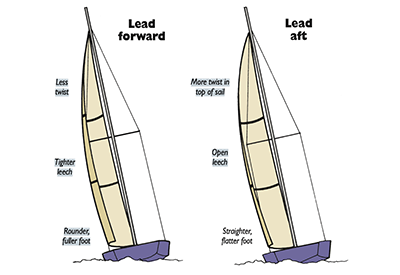
November 16, 2022
Jib lead position works like the main outhaul
Moving the jib/genoa lead fore and aft affects foot depth, much like the outhaul controls foot depth on a mainsail. To add depth, move the lead forward (left). This shortens the distance between the clew and tack, which moves the foot of the sail farther away from its chordline. It also reduces twist and makes the leech tighter. This adds power to the sail, but too round a shape down low will give the sail a tight, hooked leech which can narrow the slot, stall wind flow, and create backwind.
If you move the jib/genoa lead aft (right), this reduces depth in the foot. It makes the bottom half of the sail flatter and opens up the leech, creating more twist in the sail.This depowers the sail, but allows you to sheet the sail harder (because you can do this without making the leech too tight).
The fore-and-aft position of your jib car is critical for getting the right headsail shape. Moving the lead aft makes your headsail flatter and more twisted, which is good when you have a lot of wind. Moving the lead forward gives you a tighter leech and a deeper sail. This is generally good in lighter air when you need a lot of power. However, you have to be careful about getting the leech too tight in light air, especially if there are any waves. In those conditions, the trimmer typically eases the sheet quite a bit – that’s why he or she also has to move the lead forward, or the sail will twist too much.
On some boats the trimmer is also able to change the lateral position of the jib lead. Many Stars, for example, have a two-dimensional jib track system that allows the trimmer to put the lead almost anywhere he wants. On this page and the next are a bunch of ideas about how to properly set the position of your jib leads.
Symmetric jib leads? The jib lead should normally be positioned in the same place on each tack, but watch out for asymmetries in the wind or water. It’s not uncommon to have a condition where the jib lead needs to go farther forward on one side. Here are two situations when you should go with uneven leads.
- The waves aren’t lined up with the wind. This might happen when you have a wind shift and the waves are still coming from the old wind direction. In that case, you want the lead farther forward on the bumpier tack (i.e. the tack that goes more directly into the waves).
- There is wind sheer aloft. Sometimes the wind up high comes from a slightly different direction than the wind at water level. If the top of your jib is seeing a shift to the left, for example, the lead on the port side should be farther forward so you have less twist in the top of the jib on starboard tack.
Two ways to set fore- and-aft lead position
Finding the right hole or position for your jib lead can be tricky because it is a function of the particular jib you are using and, of course, the specific wind and wave conditions in which you are racing. Here are two ways you can approach this:
1. Set the jib lead position so the telltales along the luff break evenly from top to bottom. In other words, as the boat heads up into the wind, the telltales on the windward side should all start lifting up at the same time. If the top telltale breaks first, move the lead forward; if the bottom one breaks first, move the lead aft.
This idea is great in theory, but in practice the top telltale usually breaks first. If you move the lead far enough forward so all the telltales break evenly, it may limit your ability to sheet the sail and cause too much backwind in the main. In conditions where you need a good bit of twist in the sail, such as in light or heavy wind or waves, it’s OK to let the top telltale break a little early.
2. Set the jib lead position so that when you pull in the sheet the foot and leech of the sail trim in concert and reach their perfect trim at the same time. If the foot gets too tight before the leech is tight enough, move the lead forward. If the leech gets tight and there is still too much curvature in the foot, move the lead aft. This is my preferred method.
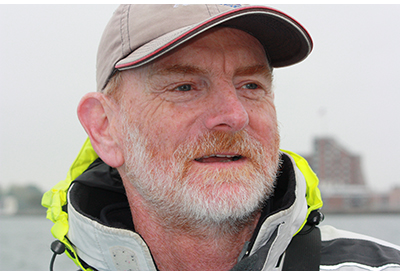 Dave Dellenbaugh is the publisher, editor and author of Speed & Smarts, the racing newsletter. He was the tactician and starting helmsman on America3 during her successful defense of the America’s Cup in 1992 and sailed in three other America’s Cup campaigns from 1986 to 2007. David is also two-time winner of the Canada’s Cup, a Lightning world champion, two-time Congressional Cup winner, seven-time Thistle national champion, three-time Prince of Wales U.S. match racing champion and past winner of the U.S. Team Racing Championship for the Hinman Trophy. He is currently a member of the US Sailing Racing Rules Committee (and was its chairman from 2005-2008).
Dave Dellenbaugh is the publisher, editor and author of Speed & Smarts, the racing newsletter. He was the tactician and starting helmsman on America3 during her successful defense of the America’s Cup in 1992 and sailed in three other America’s Cup campaigns from 1986 to 2007. David is also two-time winner of the Canada’s Cup, a Lightning world champion, two-time Congressional Cup winner, seven-time Thistle national champion, three-time Prince of Wales U.S. match racing champion and past winner of the U.S. Team Racing Championship for the Hinman Trophy. He is currently a member of the US Sailing Racing Rules Committee (and was its chairman from 2005-2008).
You can subscribe to the Speed & Smarts newsletter HERE.

